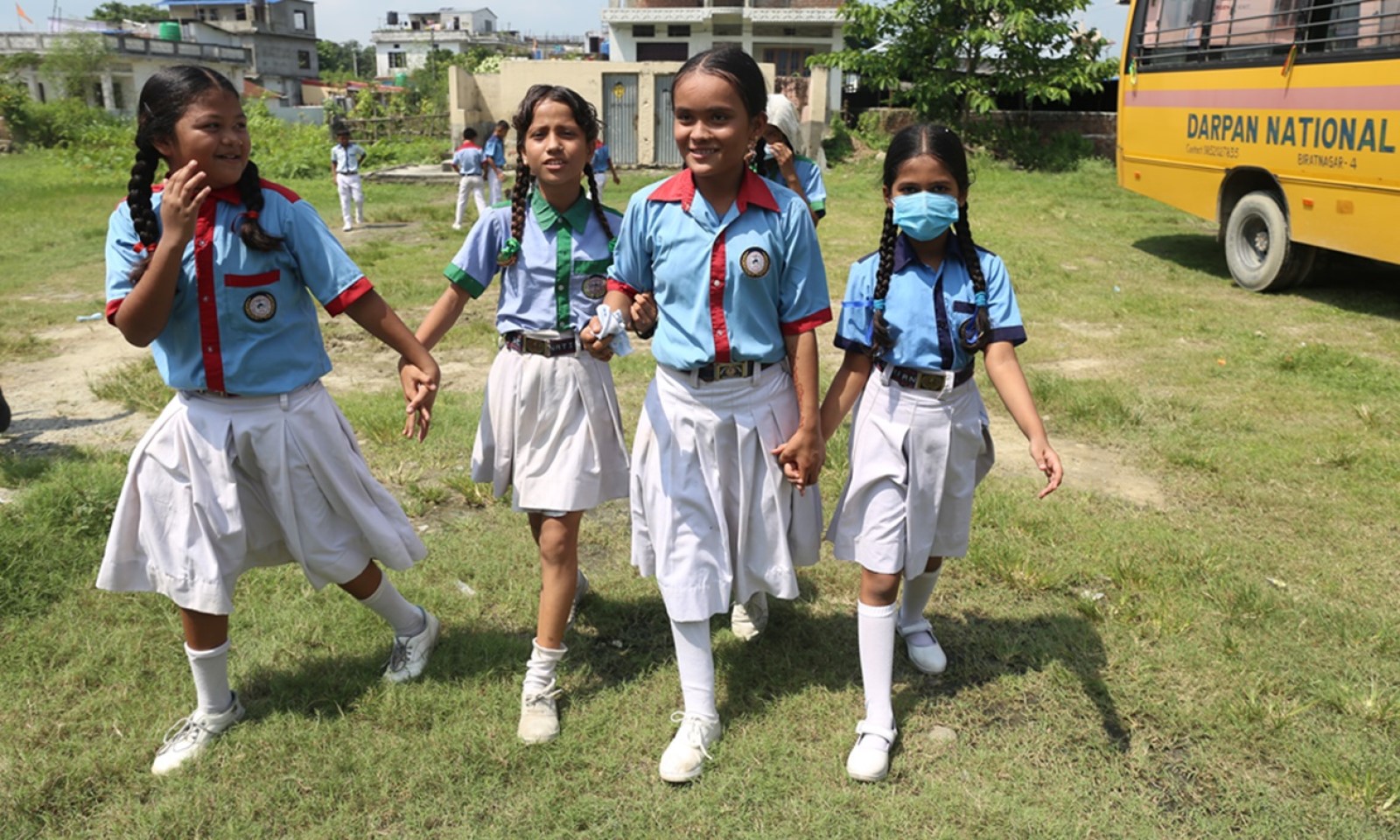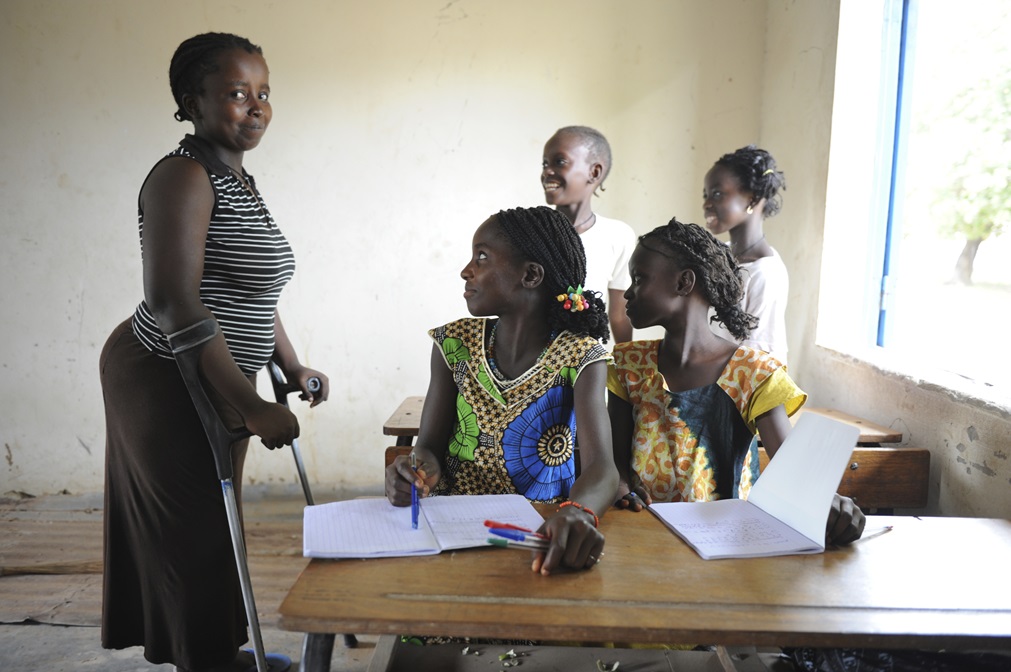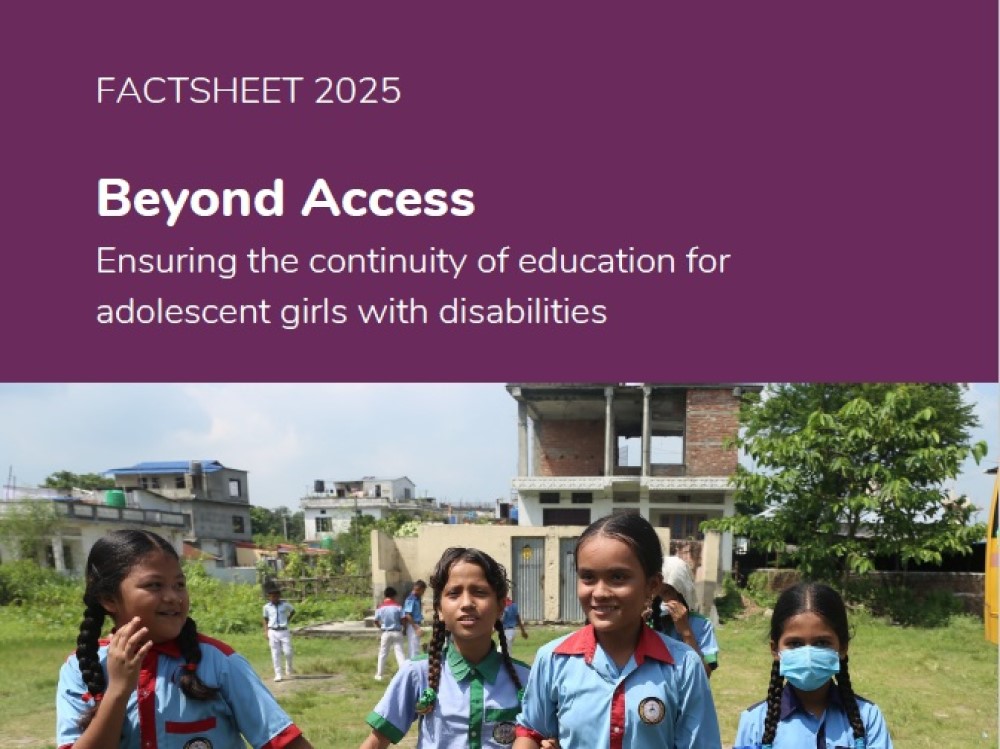Our latest advocacy publications
Humanity & Inclusion – Handicap International presses for crucial policy changes in policy areas relevant to its specific expertise. You can find more information on the page “Fighting for global policy change”. On this page below, you will find information on our latest evidence-based publications.




Four girls from Nepal in school uniform. © A. Thapa / HI
Impact of societal norms and stigma
Adolescent girls with disabilities face a compounded form of discrimination due to the intersection of gender, age, and disability. Social stigma and harmful cultural norms often view these girls as less capable of contributing to society, leading to their education being deprioritised. In many contexts, girls are expected to assume domestic roles, and those with disabilities are seen as less likely to succeed in traditional educational settings.
This exclusion not only limits their educational opportunities but also restricts their future opportunities. Cultural and societal biases contribute to a vicious cycle of inequality, where girls with disabilities are kept from reaching their full potential, affecting their personal, social, and economic prospects. The intersection of age, gender, and disability heightens the risk of dropping out or discontinuing education, particularly during adolescence.
Gender-based violence and child marriage violate their rights and further exacerbate educational challenges, making tailored interventions essential to prevent exclusion and ensure continuity in education.
Economic barriers hindering education
In low-income settings, families often prioritise the education of sons over daughters with disabilities, influenced by cultural biases that view sons as future breadwinners and daughters as dependent. In many cases, girls with disabilities are kept at home to contribute to household tasks, as this is seen as more immediately cost-efficient than schooling. T
The high cost of assistive devices, such as wheelchairs or glasses, further limits access to education. These resources are often unavailable or too expensive for families to afford, leaving girls without the necessary support to succeed in school. Additionally, healthcare needs frequently take precedence over education, as families must allocate scarce resources to health-related expenses.
Household economic potential is also impacted when a parent or sibling, usually the mother or an older daughter, is required to stay home to care for a child with disabilities. This dynamic stretches already limited resources and leaves little room for investing in education.
These compounding factors create a cycle of exclusion, depriving girls with disabilities of the chance to pursue education and improve their economic futures.
Key facts
40%
of children with disabilities are out of primary school in low- and middle-income countries.
(UNICEF, 2021)
72 HEURES
notre temps de réponse
opérationnelle
55%
of children with disabilities are out of lower secondary level in low- and middle-income countries.
(UNICEF, 2021)
Twice
Adolescents are twice as likely to be out of school compared to younger children.
(UNICEF, 2015)
41,7%
of girls with disabilities complete primary school (compared to 50.6% of boys with disabilities and 52.9% of girls without disabilities).
(World Health Organisation and World Bank, 2011)




Lack of inclusive educational environments
Many schools lack the necessary infrastructure to accommodate students with disabilities. From narrow doorways to inaccessible classrooms, the physical environment can be a significant barrier. These challenges are even more pronounced in rural areas, where the distance to schools adds an additional obstacle, particularly for girls with mobility challenges.
Additionally, inclusive teaching practices and adapted materials are crucial to ensuring that girls with disabilities can learn and thrive in educational settings. Schools must invest in training staff, improving accessibility, and providing resources that meet the diverse needs of students.
Also, many schools fail to provide private, accessible spaces for girls to manage menstruation, which is a basic need for dignity and well-being. This issue is particularly pressing for girls with disabilities, who may require additional support to manage menstruation effectively. Without proper facilities, these girls often face discomfort or embarrassment, leading them to miss school during their menstrual cycle.
Without accessible environments and tailored support, transitioning from primary to secondary education—or advancing to vocational training or higher education—is especially difficult.
Picture: A classroom in Senegal. © J-J. Bernard / HI
Safety risks faced by girls with disabilities
Girls with disabilities are significantly more vulnerable to various forms of violence, including sexual violence, bullying, and gender-based violence. Studies show they are more likely to experience sexual violence than their peers without disabilities, making the school environment particularly perilous for them.
To go further, read the factsheet developed by Handicap International- Humanity & Inclusion (HI). It draws on a qualitative study conducted in Nepal, Rwanda, and Senegal from July to August 2024. The objective of the study was to understand the barriers to education experienced by adolescent girls with disabilities and to formulate advocacy messages to address these challenges. 117 rights holders were consulted, including 68 adolescents in Nepal, 19 in Rwanda, and 30 in Senegal.
By amplifying their voices, this publication seeks to inform decision-making in the education, development, child protection, gender-based violence and disability sectors, ultimately advocating for more inclusive and equitable educational systems for all girls.




Always Included
Uninterrupted education for children with disabilities before, during, and after a crisis.
In English and French, 2023




Advancing the protection of humanitarian and health worker
The report was drawn up under the Presence, Proximity and Protection (PPP) project by NRC (as lead), Geneva Call, experts from the Graduate Institute, Action Against Hunger (ACF), Médecins du Monde (MdM) and HI.
In English only, 2023.







